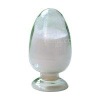1, content(Glucomannan>70%) 2,viscosity(22000~12000mPa.s) 3, 40-120mesh
Konjac Fine Flour
Konjac Fine flour is made from konjac tubers through ways of crushing, grinding and impurity separation. Its main ingredient is glucomannan (KGM) with a content of 60% -85%. It also contains several kinds of amino acids, vitamins, trace elements and so on. Konjac flour appears yellowish with the specific Konjac odor.
The konjac fine flour has a size of 40-120 meshes.
Range of application
1,Considering its gelling property, it can be used in a number of bionic foods such as konjac tofu, konjac noodles, vegetarian belly slices, vegetarian shrimps, vegetarian fish slices, etc.
2,As an additive raw material, it can widely be used in food, pharmaceutical, chemical, textile and dyeing industry, as a stabilizer, emulsifier, thickener, binder, film forming agent, etc.
Technical Indicators of Jinheri Konjac Fine flour
Product | Konjac Fine Flour | |
Type | FT4012 | FY4012 |
Color | Yellowish | Yellowish |
Shape | Granulose | Granulose |
Odor | Slight | Slight |
Grading (mesh) | 40-120 | 40-120 |
Viscosity(mPa.s) | ≥20000 | ≥12000 |
KGM (Dry basis (%)) | ≥70 | ≥65 |
Water content(%) | ≤12 | ≤13 |
Ash content(%) | ≤4.0 | ≤4.5 |
SO2(g/kg) | ≤1.6 | ≤1.8 |
(Pb)(mg/kg) | ≤1.0 | ≤1.0 |
(As(mg/kg) | ≤3.0 | ≤3.0 |
PH(1%sol) | 6-8 | 6-8 |
Note:
Viscosity is measured by using NDJ-1 rotary viscometer and No. 4 rotor (12 R/min) with a temperature of 30 °C,and 1% aqueous solution.
Packaging: use laminating kraft paper, 25kg / bag;
Storage: placed in dry, ventilated environment, avoiding exposure to moisture and sunlight.
Shelf life: 2 years
Enclosure
Introduction to konjac
Konjac is categorized in the aroideae, belongs to the perennial plant and is mainly produced in Sichuan and Yunnan provinces.
The rootstock of Konjac not only contains more than 10 kinds of amino acids and trace elements required by human body, but also is rich in soluble dietary fiber, which has the effect of lowering blood pressure and blood sugar, weight loss, relaxing the bowels, beautifying the features and other medicinal value.
Main ingredients
The main ingredients of konjac are glucomannan (KGM), which is a kind of high molecular polysaccharide with molecular weight of 200,000 -2 million and its chemical structure is a kind of polymer heteropoly sugar made from 1:1.6-1.7 glucose and mannose residues and polymerized through -1,4 glucosidic bond.
Introduction to glucomannan (KGM)
Water solubility
KGM is soluble in water and its dissolution rate increases with the decrease of granularity of konjac flour.
Gelling property
Compared with carrageenan, guar gum, xanthan gum and gelatin etc., KGM has its unique gelling property. The first is its higher viscosity; the second is that it can form thermal reversible and thermal irreversible gel under certain circumstances. .
Stability
KGM is a kind of vegetable gelatin and has a better stability compared to xanthan gum, guar gum and locust bean gum. It can remain its stability without precipitation under room temperature and the condition of below PH3.3.
Konjac Fine Flour(Suitable for dietary fiber food,bionic foods)






